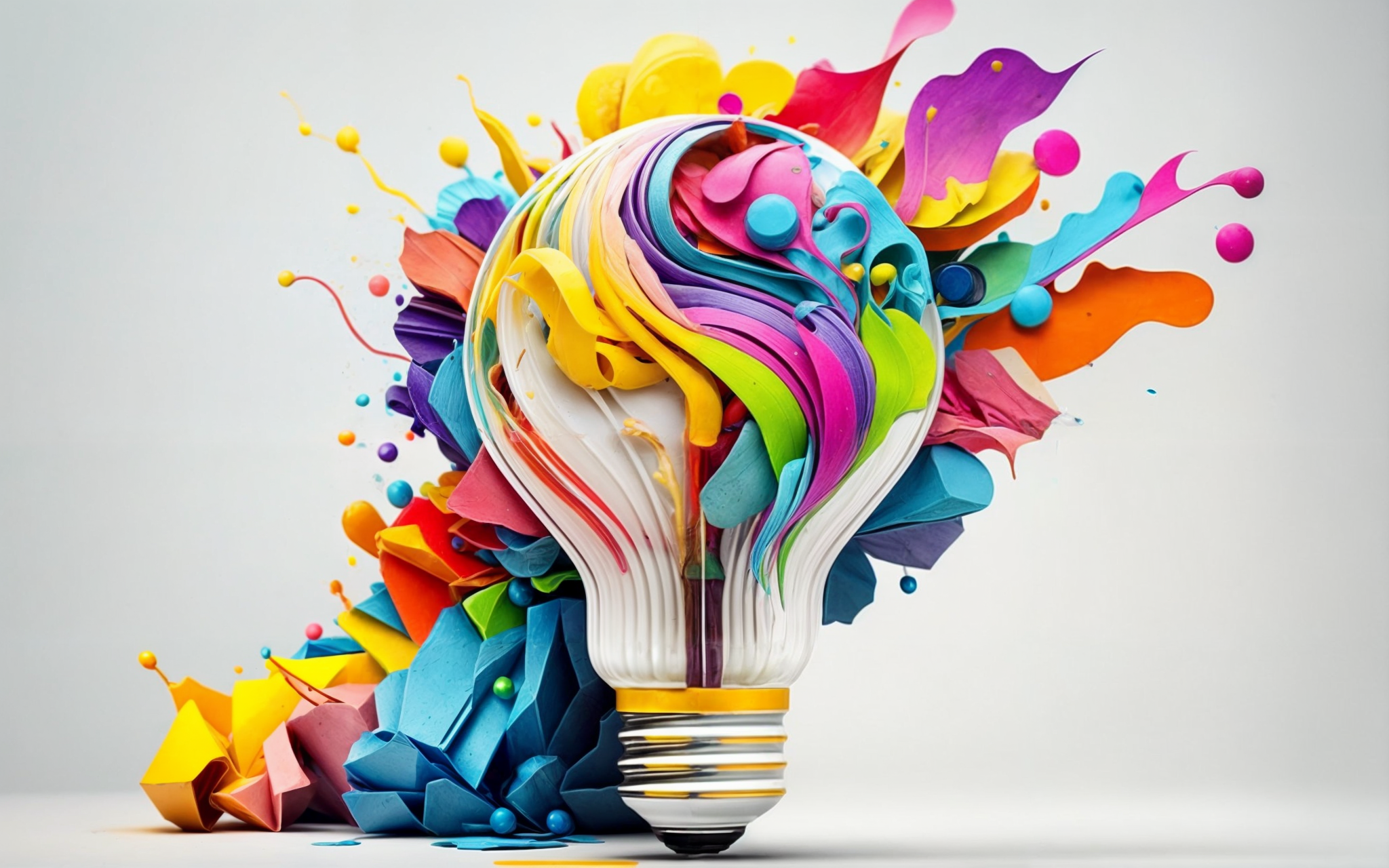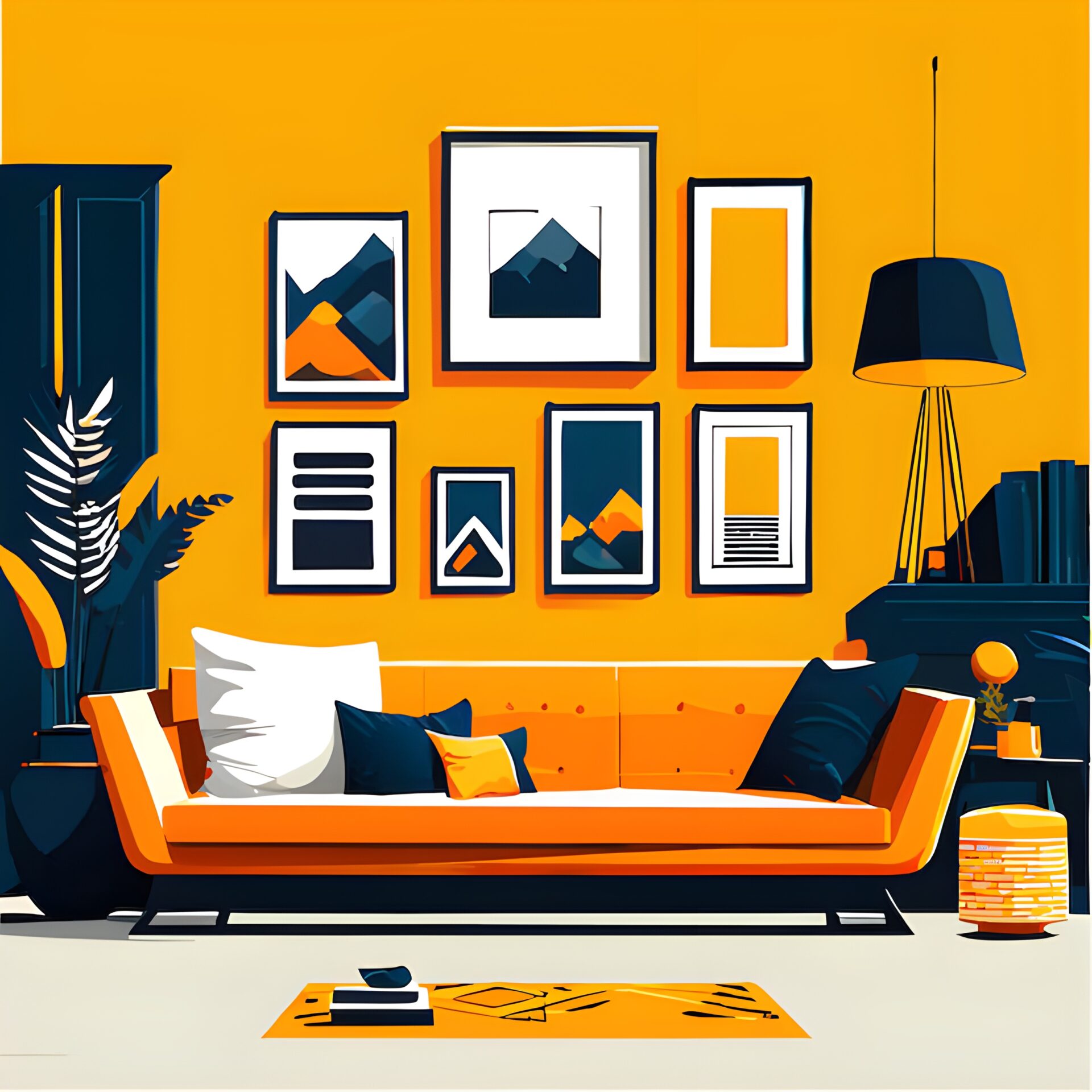Interior Design
Interior design is the art and science of enhancing the interior of a space to achieve a healthier and more aesthetically pleasing environment for the people using it. It involves a multifaceted approach that includes conceptual development, space planning, site inspections, programming, research, communicating with the stakeholders of a project, construction management, and execution of the design.
1 Key Elements of Interior Design.
1.1Space: The foundational element of interior design. It refers to the physical boundaries of a room and includes both the 2-dimensional floor space and 3-dimensional volume space. Space planning is crucial for effective design.
1.2 Line: Lines bring structure and form to a room. They can be horizontal, vertical, or dynamic, influencing the room’s balance and feel. Horizontal lines create a sense of stability, while vertical lines emphasize height and space. Dynamic lines, such as diagonals or curves, inject energy and movement.
1.3 Form: Forms are shapes in general, representing the three-dimensional aspects of objects within the space. They can be geometric (sharp, man-made) or natural (organic, flowing).
1.4 Light: Light is essential for visibility and can dramatically affect the mood and appearance of a space. It includes natural light and artificial lighting. Proper lighting enhances the colors, textures, and overall feel of the space.
1.5 Color: Color is a powerful design tool that can influence mood and perception. It can make a space look larger or smaller, warmer or cooler. Understanding color theory and the psychological effects of colors is vital in interior design.
1.6Texture: Texture refers to the surface quality of materials and can be visual or tactile. It adds depth and interest to a room, creating contrast and balance. Smooth, shiny surfaces can make a space feel more formal, while rough, matte surfaces add warmth and coziness.
1.7Pattern: Patterns add life and interest to a room. They can be incorporated through fabrics, wallpapers, rugs, and more. Patterns should complement the overall design and not overwhelm the space.
1.8 Furniture: Furniture selection and placement are critical in defining the function and aesthetic of a room. It should balance comfort, functionality, and style.

2 Principles of Interior Design
2.1 Balance: Achieving visual balance involves arranging elements so that no one part of the room overpowers another. There are three types of balance: symmetrical, asymmetrical, and radial.
Achieving visual balance in interior design involves arranging elements so that no one part of the room overpowers another, creating a sense of harmony and stability. There are three types of balance: symmetrical, asymmetrical, and radial. Symmetrical balance is achieved by placing identical elements on either side of a central axis, offering a formal and orderly feel. Asymmetrical balance uses different elements of equal visual weight, creating a more dynamic and interesting space. Radial balance involves arranging elements around a central point, often seen in circular patterns or furniture arrangements, providing a focal point that draws the eye inward. Each type of balance contributes to a well-coordinated and visually appealing interior.

2.2Rhythm: Rhythm in interior design is about creating patterns of repetition and contrast to create visual interest. This can be achieved through color, shapes, or textures.
Rhythm in interior design is about creating patterns of repetition and contrast to generate visual interest and guide the eye through a space. This can be achieved through the strategic use of color, shapes, or textures, repeating elements at regular intervals to establish a sense of coherence and flow. For example, a sequence of bold, colorful cushions or a series of similarly shaped light fixtures can create a rhythm that ties different areas of a room together. Contrast, such as alternating smooth and rough textures, adds complexity and depth, preventing the design from becoming monotonous. By thoughtfully incorporating rhythm, a room can feel both dynamic and harmonious.

2.3 Harmony: Harmony ensures that all elements in a room work together to create a cohesive look. It’s about the overall unity of the design, where each element complements the others
In the designing of interiors, harmony refers to how different components of a room come together so that they can create a single whole look. The colors, furniture and other things are selected in such a way that together they match well with each other hence forming an unbroken mixture of styles and textures. Harmony is established once there is no one item that draws attention because all other items contribute to the main idea or feelings. This oneness makes everything calm and organized leading to a well-planned and intuitive space. Harmony is important in order to have a space which is attractive to see and comfortable enough for living purposes.

2.4 Emphasis: Every room should have a focal point, whether it’s a piece of art, a fireplace, or a piece of furniture. Emphasis draws attention to a particular element, giving the room a sense of purpose.
Emphasis in interior design is about creating a focal point that draws attention and gives a room a sense of purpose. This focal point could be a striking piece of art, an elegant fireplace, or a standout piece of furniture. Emphasis is achieved by strategically highlighting this element through placement, lighting, color, or scale, ensuring it stands out while complementing the overall design. By establishing a clear point of focus, emphasis guides the viewer’s eye and anchors the space, providing visual interest and enhancing the room’s aesthetic appeal. It creates a sense of hierarchy and directs how one experiences the room.

2.5 Proportion and Scale: Proportion relates to how well the elements within a space relate to one another. Scale refers to the size of objects in relation to the space they occupy. Both are crucial for creating a balanced and harmonious space.
Proportion and scale are crucial elements in interior design that contribute to a balanced and harmonious space. Proportion refers to how well the various elements within a space relate to one another in terms of size, ensuring that they complement rather than overpower each other. Scale, on the other hand, considers the size of objects in relation to the overall space they occupy, ensuring that furniture and decor are appropriately sized for the room. Both proportion and scale work together to create a sense of balance, preventing any single element from feeling out of place or overwhelming the space. By carefully considering these aspects, designers can create interiors that feel cohesive, comfortable, and visually pleasing.

The Role of an Interior Designer
The role of an interior designer is multifaceted, blending creativity with technical expertise to enhance the functionality and aesthetics of interior spaces. Interior designers work closely with clients to understand their needs, preferences, and lifestyle, translating these into cohesive design plans. They select colors, materials, furniture, and accessories that align with the desired style, while also considering factors such as lighting, acoustics, and ergonomics. Additionally, interior designers coordinate with architects, contractors, and other professionals to ensure that the design is executed accurately and efficiently. Their goal is to create spaces that are not only beautiful but also functional, safe, and reflective of the client’s personality and requirements.
Conclusion
Interior design is a dynamic and exciting field that combines creativity with practicality. It’s about creating spaces that not only look good but also feel good and function well. Whether you’re designing a cozy home, a stylish office, or a chic restaurant, understanding the principles and elements of interior design is key to creating beautiful and functional spaces.


Email Marketing Campaigns for Dhanteras: Engaging Customers Effectively
Email Marketing Campaigns for Dhanteras: Engaging Customers Effectively Introduction : Dhanteras is the starting day of Diwali, thus a

E-commerce Trends for Diwali 2024: How to Boost Online Sales
Introduction to Diwali 2024 The colorful and fragrant festival of lights is almost knocking on the door of the globe:

Peace and Prosperity – Engage With Your CustomersAlign with: Maa Mahagauri – The Goddess of Peace and Prosperity
Day 8: Peace and Prosperity – Engage With Your CustomersAlign with: Maa Mahagauri – The Goddess of Peace and Prosperity

Fulfillment and Success – Launch and Monitor Your Business
Day 9: Fulfillment and Success – Launch and Monitor Your Business Align with: Maa Siddhidatri – The Goddess of Accomplishment

Fierce Strategy – Launch Your Digital Marketing and SEO
Day 7: Fierce Strategy – Launch Your Digital Marketing and SEO Align with: Maa Kaalratri – The Fierce and Goal-Oriented

Your Digital Dream Store: A Guide to E-Commerce Solutions
Day 6: Empowerment – Setting Up Your E-Commerce and Payment Gateways Align with Maa Katyayani, the Goddess of Power and



